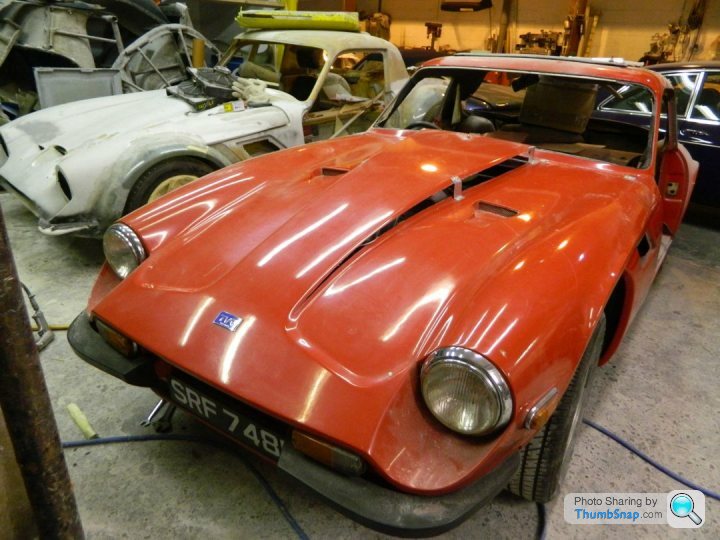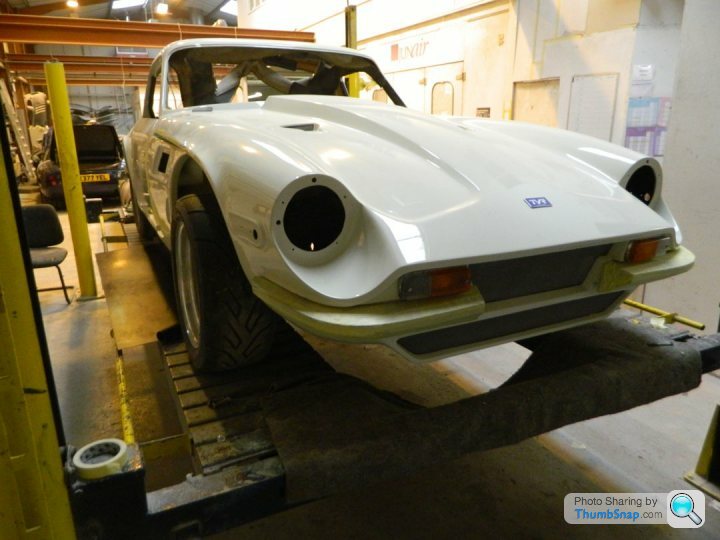bonnet vents 3000m
Discussion
My 1976 3000M has bonnet vents on top of the bonnet. I see the earlier 3000M had vents on the sides also.
Do the side vents help to reduce heat under bonnet or are they there just for show.
There is also a cowling under the spare wheel on my 3000M, does it help with cooling.
On my 3000S there is some alloy sheet metal cowling under the spare wheel.
Alan
Do the side vents help to reduce heat under bonnet or are they there just for show.
There is also a cowling under the spare wheel on my 3000M, does it help with cooling.
On my 3000S there is some alloy sheet metal cowling under the spare wheel.
Alan
Edited by plasticpig72 on Wednesday 7th September 12:04
I've listened to people who say they help, as well as those who hold the opposite opinion. Until someone does some testing, by placing tape over an existing set of side vents, and taking readings, we won't know.
Anybody interested in playing M series scientist?
Best regards,
Bernard.
Anybody interested in playing M series scientist?
Best regards,
Bernard.
This fits on a race car with big manifolds and close to 300 BHP.
It runs on track, sometimes running very hard for over an hour. It never gets above 70 Deg C. It has a chim ally radiator with water and glycol inside.
It wasn't always been that way, the change was brought about by the scoop being added to a standard bonnet.
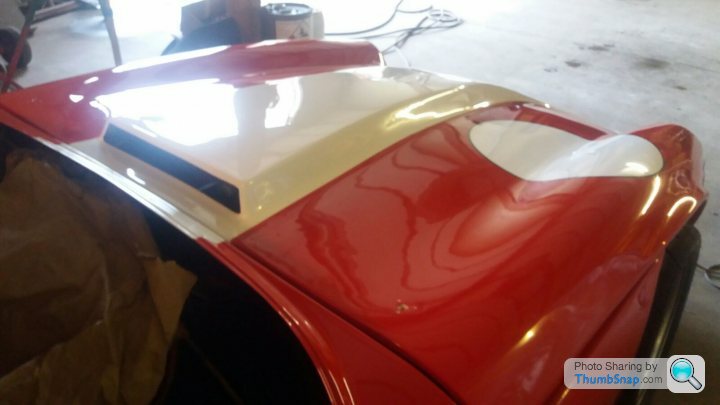
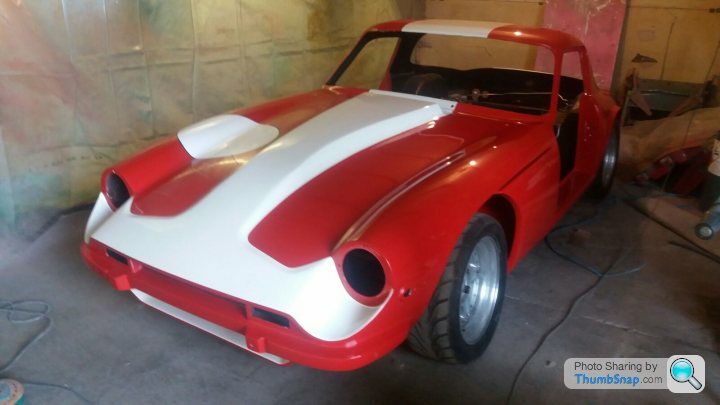
It won't be modified to change air flow in or out.
It runs on track, sometimes running very hard for over an hour. It never gets above 70 Deg C. It has a chim ally radiator with water and glycol inside.
It wasn't always been that way, the change was brought about by the scoop being added to a standard bonnet.


It won't be modified to change air flow in or out.

Edited by anonymous-user on Wednesday 7th September 14:23
BUT a small detail hot air rises or am i missing something.
Imho it's better to help hot air escape in the direction it wants to go.
Out of the highest point of the bonnet at the back.
Cars with a low height wide rad under the spare wheel at the front have a special cowling to direct air through rad and not around.
Alan
Imho it's better to help hot air escape in the direction it wants to go.
Out of the highest point of the bonnet at the back.
Cars with a low height wide rad under the spare wheel at the front have a special cowling to direct air through rad and not around.
Alan
Hot air clearly rises as you say. The big difference is when the car is moving.
All the air that goes over the bonnet will meet up with the vertical windshield where it must change direction. There is also the air overhead that is going over the roof. The two paths must be forced together. There is now a higher pressure at the base of the windshield that diminishes as it goes up or sideways. At the very base the air will be forced down if there is somewhere for it to go. Many modern cars have the air intake for the cabin located here for just that reason. On cowl induction, a sealed air intake to the motor will be the direction of air travel.
Next time you are driving in the rain in a car that has an air intake at the base of the windshield you will notice a direction in travel of the water droplets that collect on the glass. At the very bottom few inches the water will go sideways and a bit further down the water droplets will be forced down.
Hopefully the image below helps.
Arthur
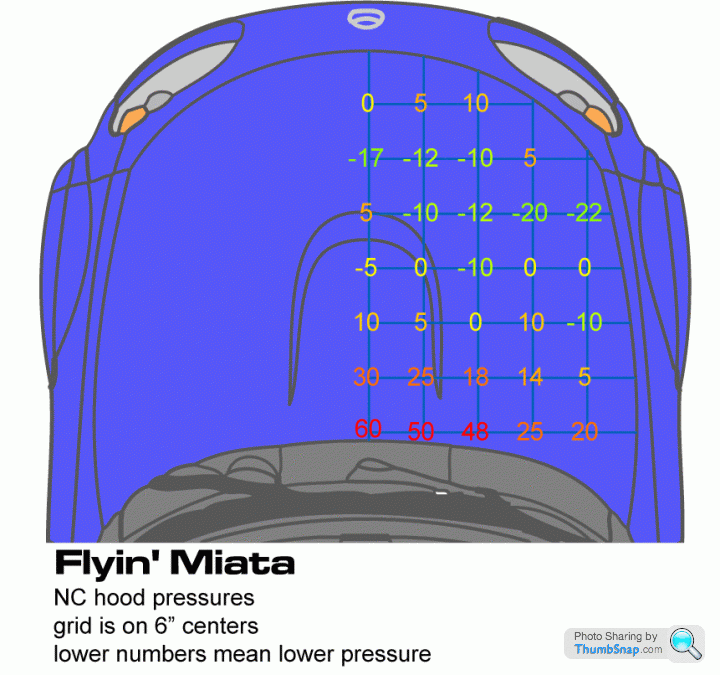
All the air that goes over the bonnet will meet up with the vertical windshield where it must change direction. There is also the air overhead that is going over the roof. The two paths must be forced together. There is now a higher pressure at the base of the windshield that diminishes as it goes up or sideways. At the very base the air will be forced down if there is somewhere for it to go. Many modern cars have the air intake for the cabin located here for just that reason. On cowl induction, a sealed air intake to the motor will be the direction of air travel.
Next time you are driving in the rain in a car that has an air intake at the base of the windshield you will notice a direction in travel of the water droplets that collect on the glass. At the very bottom few inches the water will go sideways and a bit further down the water droplets will be forced down.
Hopefully the image below helps.
Arthur

Yep, forget about heat rising, it's all about air pressure. There will be high pressure under the bonnet, which will escape to an area with lower pressure, which in most cars is underneath.
As said and shown in the diagram above, any vents at the base of the screen are more likely to let air in.
If you want to let air out, the front 1/3rd of the bonnet is the best place for a vent, as shown by the lower pressure in the diagram.
To see which way the air flows around a vent, you can tape a few tufts of wool around it, see if they're sucked in or not.
As said and shown in the diagram above, any vents at the base of the screen are more likely to let air in.
If you want to let air out, the front 1/3rd of the bonnet is the best place for a vent, as shown by the lower pressure in the diagram.
To see which way the air flows around a vent, you can tape a few tufts of wool around it, see if they're sucked in or not.
Edited by SlimJim16v on Friday 9th September 00:38
Most cars start to get warm when they are stood still, once they're hot, M Series V6 cars seem reluctant to cool again when running - marginal cooling.
My vents and radiator change combination seem to help prevent this.
The vent will also let me have cold air to a 700CFM Holley on the car with the white bonnet, or 3x 42DCNF carbs on the red and white car. The option being rather second hand hot air after being through the rad and warmed further by engine and exhaust.
As I said previously the race car runs nice and cool and does not suffer any fuel loss of pressure. The V8 car, I expect to behave similarly, but it has a greater heat sink with lots of exhaust pipework under the bonnet, and a 5345cc V8 rather than the measly 3100.
I'll let you know how the V8 performs in practice, but as it was never run with standard bonnet, I have no comparison.
My vents and radiator change combination seem to help prevent this.
The vent will also let me have cold air to a 700CFM Holley on the car with the white bonnet, or 3x 42DCNF carbs on the red and white car. The option being rather second hand hot air after being through the rad and warmed further by engine and exhaust.
As I said previously the race car runs nice and cool and does not suffer any fuel loss of pressure. The V8 car, I expect to behave similarly, but it has a greater heat sink with lots of exhaust pipework under the bonnet, and a 5345cc V8 rather than the measly 3100.

I'll let you know how the V8 performs in practice, but as it was never run with standard bonnet, I have no comparison.
On my 3000S in the bonnet grill before rad on the right and on the left there are round ducting attachements. Only one is used on the passenger side with round ducting going up to feed air to the heater box. Maybe i might use the spare one on passenger side and put ducting to feed cool air upto carb. Once the car was stopped in traffic in very hot weather for about 20 mins and i could see the petrol bubbling inside the glass dome on the mechanical fuel pump. It's a bit of a pain in the butt to have to open the bonnet to let the engine cool down while spraying the carb and pump with cool water.
Alan

Alan
I have owned a few Taimars over a 30 year period and the heat build up under the bonnet is ferocious! The bonnet design is dreadful - trapping heat and causing fuel vaporisation - especially when in slow moving traffic. This has happen on all my cars - so I can only conclude its a common problem.
I looked carefully at the factory fitted vents but these do not offer hot air exhaust at a sufficient rate. Whilst the cars will function without 'cutting holes' in the bonnet - adding vents just makes them function better.
I have added large vents above the exhaust manifolds and this sorts the problem beautifully. I took a long time to choose the design that I felt suited the car - BYC with air kickers was my final choice. Very nice quality that follow the lines of the bonnet well. Hope that helps.
I looked carefully at the factory fitted vents but these do not offer hot air exhaust at a sufficient rate. Whilst the cars will function without 'cutting holes' in the bonnet - adding vents just makes them function better.
I have added large vents above the exhaust manifolds and this sorts the problem beautifully. I took a long time to choose the design that I felt suited the car - BYC with air kickers was my final choice. Very nice quality that follow the lines of the bonnet well. Hope that helps.
awaiting recovery said:
I have owned a few Taimars over a 30 year period and the heat build up under the bonnet is ferocious! The bonnet design is dreadful - trapping heat and causing fuel vaporisation - especially when in slow moving traffic. This has happen on all my cars - so I can only conclude its a common problem.
I looked carefully at the factory fitted vents but these do not offer hot air exhaust at a sufficient rate. Whilst the cars will function without 'cutting holes' in the bonnet - adding vents just makes them function better.
I have added large vents above the exhaust manifolds and this sorts the problem beautifully. I took a long time to choose the design that I felt suited the car - BYC with air kickers was my final choice. Very nice quality that follow the lines of the bonnet well. Hope that helps.
Need pics!I looked carefully at the factory fitted vents but these do not offer hot air exhaust at a sufficient rate. Whilst the cars will function without 'cutting holes' in the bonnet - adding vents just makes them function better.
I have added large vents above the exhaust manifolds and this sorts the problem beautifully. I took a long time to choose the design that I felt suited the car - BYC with air kickers was my final choice. Very nice quality that follow the lines of the bonnet well. Hope that helps.
TwinKam said:
awaiting recovery said:
I have owned a few Taimars over a 30 year period and the heat build up under the bonnet is ferocious! The bonnet design is dreadful - trapping heat and causing fuel vaporisation - especially when in slow moving traffic. This has happen on all my cars - so I can only conclude its a common problem.
I looked carefully at the factory fitted vents but these do not offer hot air exhaust at a sufficient rate. Whilst the cars will function without 'cutting holes' in the bonnet - adding vents just makes them function better.
I have added large vents above the exhaust manifolds and this sorts the problem beautifully. I took a long time to choose the design that I felt suited the car - BYC with air kickers was my final choice. Very nice quality that follow the lines of the bonnet well. Hope that helps.
Need pics!I looked carefully at the factory fitted vents but these do not offer hot air exhaust at a sufficient rate. Whilst the cars will function without 'cutting holes' in the bonnet - adding vents just makes them function better.
I have added large vents above the exhaust manifolds and this sorts the problem beautifully. I took a long time to choose the design that I felt suited the car - BYC with air kickers was my final choice. Very nice quality that follow the lines of the bonnet well. Hope that helps.
I am always surprised that the fuel boiling has never caused a vapour lock on my '74 M. The heat always feels intense. Not to mention the heat coming down the transmission tunnel and in turn heating the cabin.
Arthur
You are correct Alan. There are NACA vents on the top of the bonnet as well as a set of side vents behind the front wheels.
I have used one of the side vents as the intake for the cabin fresh air through the heater matrix.
I like the long vents at the outer edges of the Chimera bonnet. They would vent the heat from my headers and the location looks close to, what I believe is, a low pressure area on the surface of the hood. The M series hood has a wee bit of a crease that they could be cut into without altering the overall lines of the original car.
Arthur
I have used one of the side vents as the intake for the cabin fresh air through the heater matrix.
I like the long vents at the outer edges of the Chimera bonnet. They would vent the heat from my headers and the location looks close to, what I believe is, a low pressure area on the surface of the hood. The M series hood has a wee bit of a crease that they could be cut into without altering the overall lines of the original car.
Arthur
Gassing Station | TVR Classics | Top of Page | What's New | My Stuff




